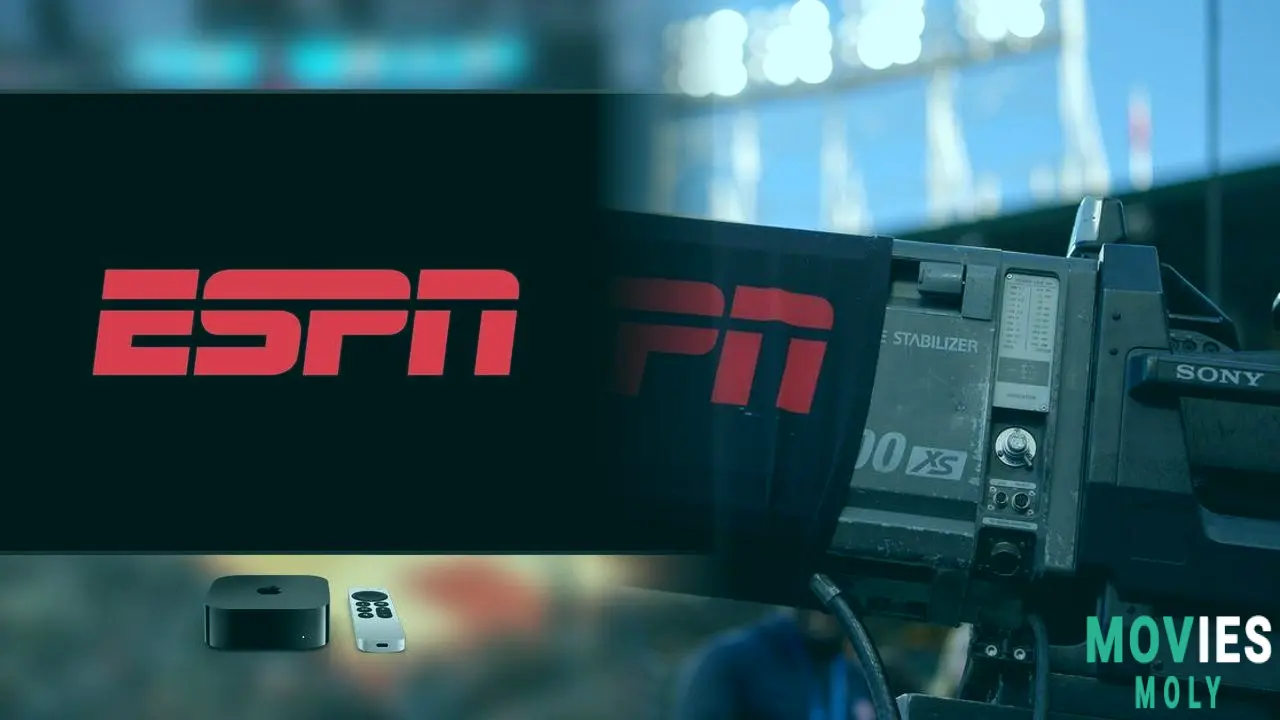If watching sports already feels a little confusing to you, then getting into the world of sports streaming services might make your head spin. After the quick rise and fall of the planned joint sports streamer called Venu, Disney decided to go in a different direction. They are now rolling out an improved version of their current service, Espn+. For a while now, Disney executives have been hinting that a "more robust" ESPN app was on the way. Now, we finally know the name of this new main app: it is just called ESPN. Simple, to the point, and easy enough to remember, you would think. But it is not quite as simple as it sounds.
An exact launch date has not been announced, but we do know it will arrive in August. Along with the name, the price was also shared. It will be $29.99 a month for the new ESPN service alone. Or you can get it bundled with Disney+ and the existing ESPN+ for $35.99 a month. If you want the ad-free plan, that will be $44.99. This starting price is more than double what ESPN+ costs right now. The new ESPN streamer is supposed to offer more programming than the confusingly named ESPN+ streamer that already exists. It makes you wonder how these two services will coexist. It feels like trying to explain why your dog has a "plus" in his name but still comes when you just call his regular name.
A Closer Look at the New ESPN Streaming Service and Its Pricing PlansBreaking Down the Costs and What Each Subscription Tier Includes
Despite the new ESPN service arriving, Disney seems pretty set on keeping both versions. The new ESPN streamer is planning to feature all of the company’s live games. This includes ESPN’s cable networks, original shows, documentaries, and more. Compared to this, ESPN+’s leagues and live offerings are a bit limited. ESPN chairman Jimmy Pitaro said that executives chose the simple new-old name because it was "straightforward." He mentioned there is power and trust in their name. Just try not to think too hard about the old plus.
Roz Durant, ESPN’s executive vice president of programming, gave more details about the two subscription options at launch. The "unlimited" plan will cost $29.99 per month. Or it will be $45.99 when you bundle it with Disney+ and Hulu. This plan will give users access to everything ESPN offers. This means ESPN2 and ESPN3, along with ESPNU, ESPN Deportes, and a bunch of college sports networks. Durant stated that this means "47,000 live events, studio shows and more every year." That is a lot of sports content if you are a big fan.
The other plan, called "select," will cost $11.99 per month. This plan will include all the content currently available on the existing ESPN+ service. So, if you are happy with what you get now, that option will still be there. But for those who want everything, the cost definitely jumps up. It makes me think about how many subscriptions some households already have. This new, more expensive ESPN service will just add to that bill for many people. It feels like every company wants a slice of your monthly budget.
Why ESPN Is Making This Big Streaming Move Now

The Landscape of Sports Streaming and Disney's Strategy
Since the platform was first announced, Disney executives have been talking up this streamer as an exciting new experience for sports fans. Disney CEO Bob Iger called the streaming service "very user-friendly" last year. He said it was "app-based." This reveal comes as Disney is trying to increase its subscriber numbers. Their regular linear TV networks have been losing viewers. This is a common problem for traditional television. However, live sporting events have been pretty good at holding onto viewers. This is why Disney was willing to spend big money to keep its NBA rights. The streaming world is crowded, with big players like Netflix, Amazon’s Prime Video, and Warner Bros Discovery’s Max all trying to get a piece of sports events. It is a tough market to compete in.
Last week, Disney shared its quarterly earnings. They showed strong results even with some economic problems. Revenue for ESPN went up 5% to $4.53 billion. But operating income dropped 16%. Disney said this drop was because of higher programming and production costs. They had three extra college football playoff games and one extra NFL game during that time. These extra games did help increase domestic advertising revenue by 29%. It shows that even with costs, live sports can bring in money. It is a risky business, but the audience is clearly there.
To make sure the launch goes smoothly, Iger said that people who already subscribe to linear ESPN will automatically get the new ESPN flagship streamer. This is a smart move. It means they do not have to worry about losing those existing loyal customers. It makes the transition easier for a big chunk of their audience. This step should help keep some people from feeling like they are getting left behind as the company moves more into streaming. I think this helps build trust, especially when big changes are happening.
The announcement of ESPN’s new streamer also comes just over four months after the Venu Sports project fell apart. Venu was a joint sports streaming effort between Warner Bros. Discovery, Disney, and Fox. Disney had already started talking up its own streaming platform in the last few months of Venu. It was clear there was no way Venu would launch. It seems like a lot of back-and-forth went on behind the scenes before Disney decided to go it alone. This kind of uncertainty is common in the streaming world, but it must be frustrating for companies trying to plan long-term strategies.
What This Means For Sports Fans And Their Wallets

Is The New ESPN Service A Smart Buy For Your Entertainment Budget?
As if we needed another streaming service, ESPN is finally getting ready to launch its long-awaited subscription plan. But are sports fans ready to pay another $29.99 a month? While the service has been highly anticipated by many sports fans, some analysts are not sure if it will actually save people money compared to cable. Michael Pachter, a research analyst, said that while it might be good for single viewers or those without cable, the cost of many streaming services can really add up. He pointed out that families could cut cable and pay $29.99 for sports, but they would still need other subscriptions for TV shows and movies. This is a very real problem for many people. It feels like we are constantly trying to find the right combination of services without spending too much.
Reports show that the average US household spends about $69 a month on streaming services. This is less than the average monthly cable bill, which is around $122. So, moving to streaming can save money overall. But, as Pachter said, it is hard to get the right bundle. He thinks people subscribe to individual channels, but we still struggle to find the best way to group them. For those who want to stream ESPN, the channel is already part of Fubo’s streaming service for $84.99 a month. It is also on YouTube TV, which costs $82.99 a month. So, there are already ways to get ESPN without traditional cable.
ESPN has seen its subscriber numbers drop in the past year, both from cable and streaming. Disney’s annual report for 2024 showed that domestic subscription revenue was down 1% compared to 2023. For the ESPN+ streaming service, subscribers were down 2%. This new, more comprehensive ESPN service is clearly meant to address these declines. It is a big bet by Disney that sports fans will pay a premium for all their content in one place. I think the challenge will be convincing enough people that this new service offers enough value to justify its higher price point. It is a balancing act between giving fans what they want and making sure the company makes enough money.



